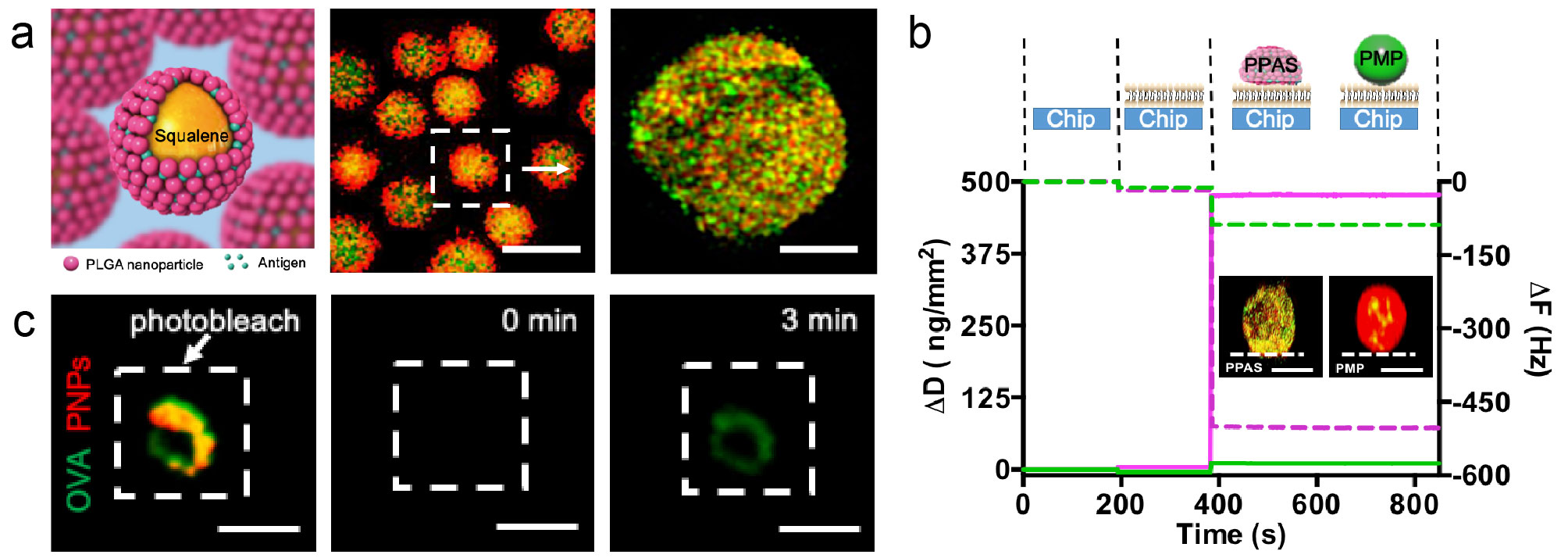
To combat infectious and chronic diseases, safe and effective adjuvant platforms for prophylactic and therapeutic vaccinations are demanded. Bionic design is regarded as the golden rule in adjuvant design.
Previous attempts have focused on the size, shape, charge or compositions of the microbes or diseased cells. However, the fluidity has not been modelled.
In fact, antigens on apoptotic and cancerous cells also experience the membrane dynamic curvature and lateral diffusion to increase the contact area and multivalent interactions with antigen-presenting cells (APCs), triggering internalization and subsequent cross-presentation of antigens for robust immune responses.
Inspired by this mechanism, a research team led by Prof. MA Guanghui from State Key Laboratory of Biochemical Engineering of the Institute of Process Engineering of the Chinese Academy of Sciences re-tailored Pickering emulsion (nanoparticle stabilized emulsion), enabling it act as an elastic and biodegradable adjuvant.
By creatively combining quartz crystal microbalance with dissipation (QCM-D) and fluorescence recovery after photobleaching (FRAP), Pickering emulsion was unraveled to model after the force-dependent deformation and dynamic fluidity of the natural endocytosis targets during the cellular contact zone (Figure 1).

Compared with the clinical relevant adjuvants (Alum, MF59, and AS04), Pickering emulsion droplets were demonstrated with the enhanced immune protections against influenza virus challenge and higher efficiency in both E.G7/OVA and B16/MUC1 anti-tumor immune therapies (Figure 2d-f).

The developed Pickering emulsion was validated with high biosafety, stability and bright prospects in clinic applications, which offered an alternative strategy to exploit the force-dependent deformation and lateral mobility of particulate adjuvants for potent vaccinations (Figure 3).
Furthermore, preparation technique of uniform biodegradable particle enables the successful construction of this bionic adjuvant with high safety, providing bright application potential.
Their work entitled “Exploiting the pliability and lateral mobility of Pickering emulsion for enhanced vaccination” was published in Nature Materials.


86-10-68597521 (day)
86-10-68597289 (night)

86-10-68511095 (day)
86-10-68512458 (night)

cas_en@cas.cn

52 Sanlihe Rd., Xicheng District,
Beijing, China (100864)

